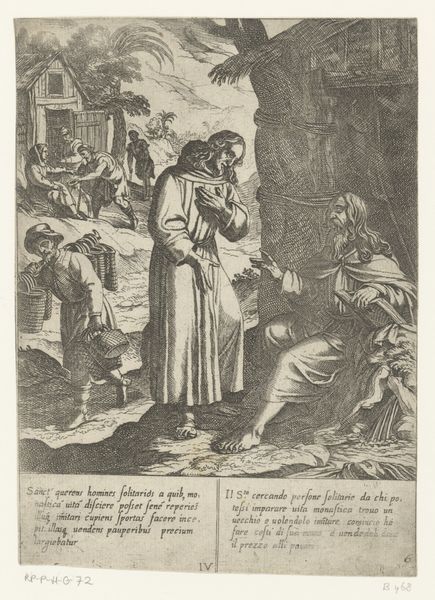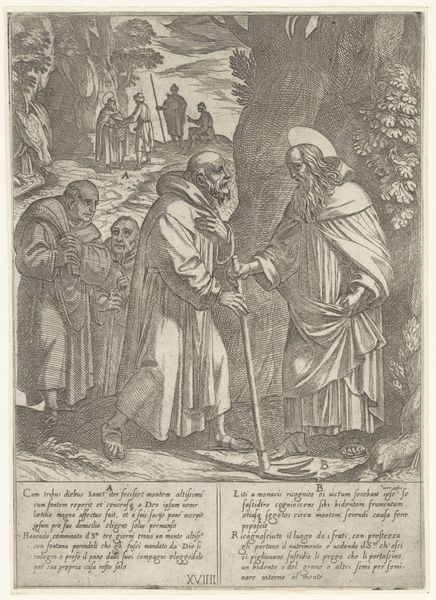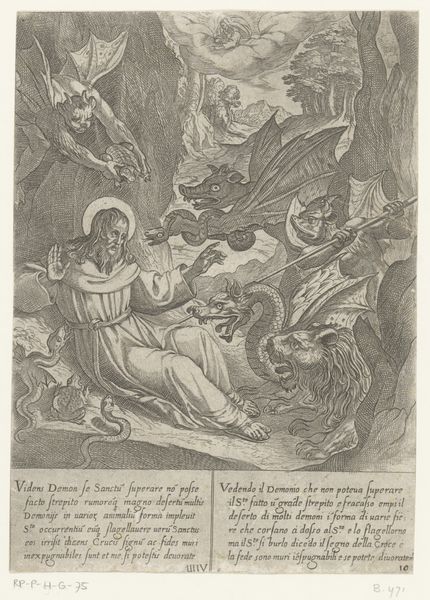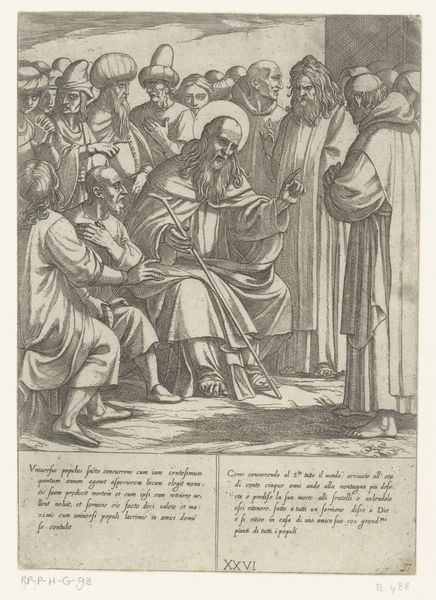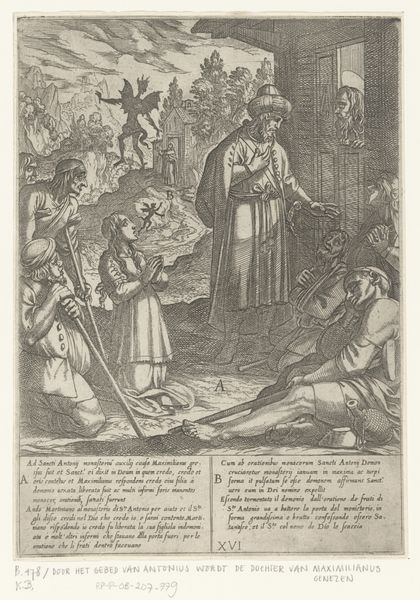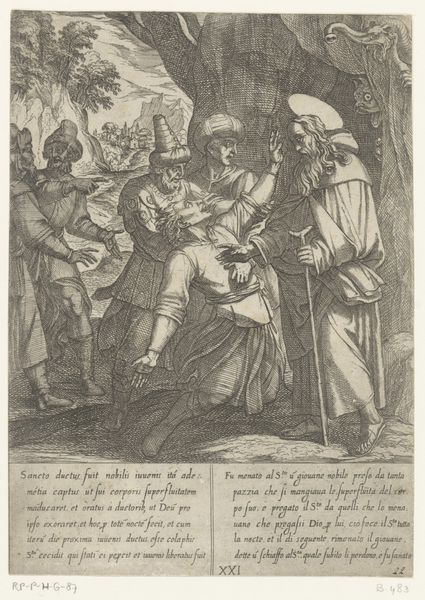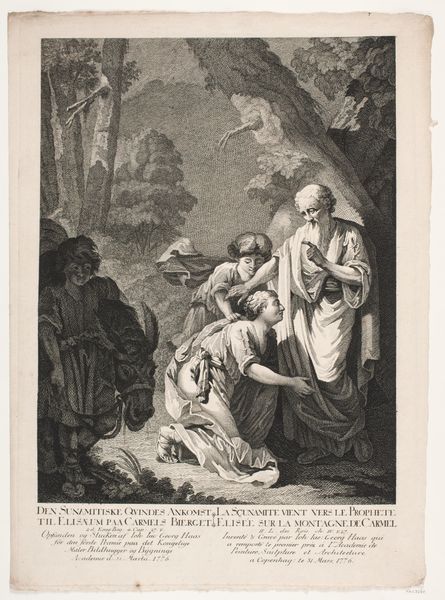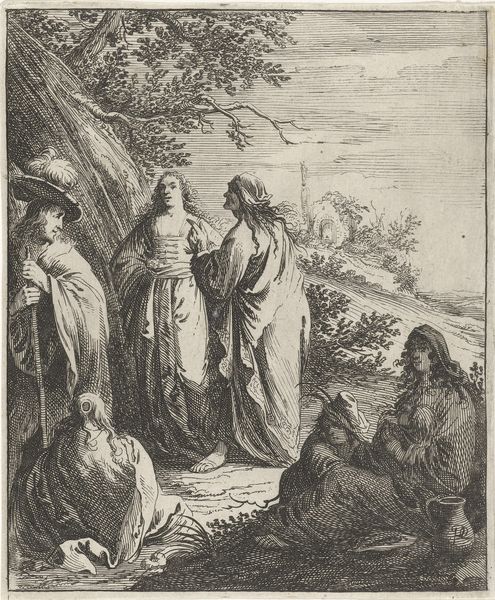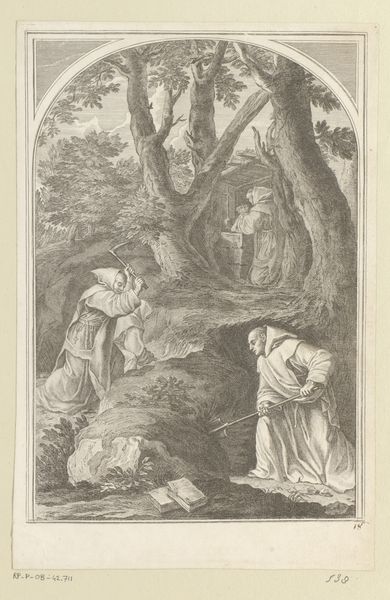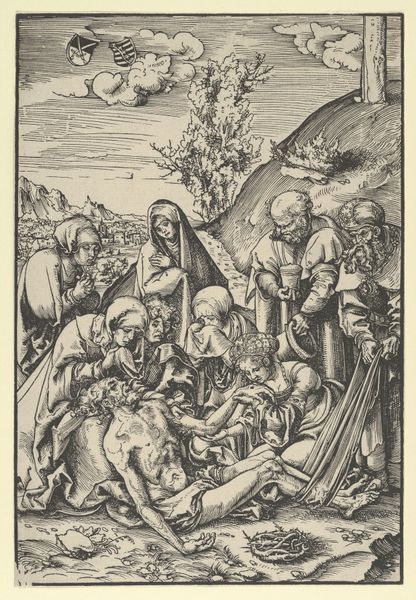
H. Antonius vraagt stervend zijn begraafplaats geheim te houden 1598
0:00
0:00
print, ink, pen, engraving
#
narrative-art
#
baroque
# print
#
pen illustration
#
book
#
old engraving style
#
figuration
#
ink
#
pen-ink sketch
#
line
#
pen work
#
pen
#
history-painting
#
engraving
Dimensions: height 231 mm, width 163 mm
Copyright: Rijks Museum: Open Domain
This engraving by Antonio Tempesta, made in Italy around 1600, depicts Saint Anthony on his deathbed, asking his brothers to keep his burial place a secret. The image reflects a key tension within the monastic tradition. On the one hand, monasteries, like all institutions, rely on stories and public displays to create a sense of collective identity and shared purpose. The veneration of relics, in particular, was a popular way to create a sense of spiritual community. Yet, on the other hand, the Saint’s request highlights the monastic ideals of humility and anonymity. Anthony’s reluctance to become a public spectacle reflects his desire to remain hidden from worldly temptations, even in death. In studying this image, a social historian might look to monastic texts, architectural plans of monasteries, and hagiographies of the Saints, to understand the full context of the engraving. Through such research, we can appreciate the social and institutional forces that shaped the artist's vision and the complex meanings it held for its intended audience.
Comments
No comments
Be the first to comment and join the conversation on the ultimate creative platform.

